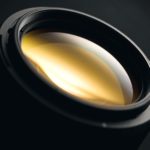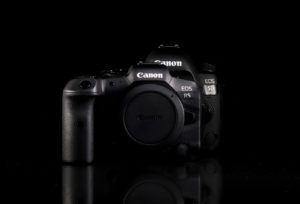
Hasselblad cameras have long been synonymous with excellence in the world of photography. Renowned for their exceptional image quality, precision engineering, and timeless design, Hasselblad cameras have captured the imaginations of professional photographers and enthusiasts alike. In this article, we delve into the captivating artistry behind Hasselblad cameras and explore how they have redefined professional photography.
The Power of Hasselblad Camera: Unveiling Unmatched Quality
Hasselblad cameras are revered for their ability to produce breathtakingly detailed images. With their large-format sensors, superior optics, and advanced image processing technology, Hasselblad cameras capture the subtle nuances of light and colour, resulting in truly stunning photographs. Whether landscapes, portraits, or still-life compositions, these cameras deliver unrivalled image quality that astounds photographers and viewers.
Craftsmanship in Every Detail: Hasselblad’s Dedication to Perfection
One must acknowledge its meticulous craftsmanship to discuss Hasselblad. Every aspect of a Hasselblad camera, from the robust build to the intuitive controls, is designed with utmost precision. Each camera is painstakingly assembled by skilled artisans who ensure every component functions flawlessly, creating a tool that empowers photographers to unleash their creativity.
The Hasselblad Experience: A Symphony of Design and Functionality
Hasselblad cameras are not just tools; they are objects of desire. The iconic design of a Hasselblad camera evokes a sense of elegance and timeless beauty. From the ergonomic grip to the intuitive interface, every detail is carefully considered to provide a seamless shooting experience. Holding a Hasselblad camera is a joy for photographers and an affirmation of their commitment to excellence.
Pushing Boundaries: Innovation and Advancements
Throughout its history, Hasselblad has been at the forefront of innovation in photography. From being the first camera on the moon during the Apollo missions to pioneering digital medium format cameras, Hasselblad has consistently pushed boundaries and expanded the possibilities of what photographers can achieve. The company’s unwavering dedication to innovation inspires photographers to reach new creative heights.
Hasselblad Community: A Network of Visionaries
Beyond the cameras themselves, Hasselblad has fostered a vibrant community of photographers who share a passion for excellence and artistic expression. Photographers using Hasselblad cameras come together through workshops, events, and online platforms to exchange ideas, collaborate, and showcase their work. This community amplifies the impact of Hasselblad, enabling photographers to learn, grow, and be inspired by each other’s achievements.
Versatility in Focal Length: Exploring Different Perspectives
One of the most significant factors differentiating camera lenses is their focal length. This measurement, expressed in millimetres, determines the lens’s angle of view and magnification. Wide-angle lenses, typically 14mm to 35mm, capture expansive scenes and are ideal for landscape and architectural photography. Standard lenses, around 50mm, replicate the human eye’s field of view, making them versatile for various genres such as street photography and portraits. Telephoto lenses, with focal lengths exceeding 70mm, allow photographers to capture distant subjects with remarkable detail, making them famous for wildlife, sports, and astrophotography.
Aperture: Controlling Light and Depth of Field
The aperture not only influences exposure but also impacts the depth of field. A wide aperture (small f-number) results in a shallow depth of field, isolating the subject from the background and creating a beautiful bokeh effect. This is particularly useful in portrait and macro photography, where the emphasis is on subject separation. On the other hand, a narrow aperture (large f-number) increases the depth of field, bringing more of the scene into focus.
Optical Quality: Pursuit of Sharpness and Image Fidelity

When investing in camera lenses, optical quality is of utmost importance. High-quality lenses are designed to minimize various optical aberrations, such as chromatic aberration, distortion, and vignetting, ensuring that the images produced are sharp, vibrant, and true to life. Lens manufacturers employ advanced technologies, precision glass elements, and lens coatings to achieve exceptional optical performance. Professional-grade lenses often incorporate aspherical and extra-low dispersion (ED) elements to enhance image quality further. Opting for lenses from reputable manufacturers, such as Nikon, Canon, Sony, or Zeiss, ensures that photographers can consistently rely on the optical excellence of their lenses.
Specialty Lenses: Expanding Creative Boundaries
Beyond the standard focal lengths, photographers can explore a wide range of specialty lenses to expand their creative boundaries. Macro lenses allow for extreme close-up photography, capturing intricate details of small subjects like flowers and insects. Tilt-shift lenses provide unique perspective control, correcting distortion and enabling selective focus manipulation. Fish-eye lenses offer an ultra-wide-angle view, creating surreal and distorted images with exaggerated perspectives. These specialty lenses add a touch of creativity and uniqueness to photographic compositions, providing photographers with endless possibilities to express their artistic vision.
Lens Compatibility: A Key Consideration
When purchasing camera lenses, compatibility with the camera body is crucial. Different camera systems employ specific lens mounts, and ensuring that the lens is compatible with your camera model is essential. Most major camera manufacturers offer a wide selection of lenses for their respective systems, providing photographers with various options to suit their needs.
Camera lenses are more than accessories; they are the gateway to visual storytelling. With their unique focal lengths, aperture control, and optical quality, camera lenses shape our perception of the world and allow us to capture and share our creative vision. By understanding the versatility of different lenses, photographers can explore new perspectives, control the depth of field, and unlock the full potential of their subjects. Whether capturing breathtaking landscapes, intimate portraits, or close-up details, the right camera lens empowers photographers to transform their vision into captivating imagery. So, embrace the power of camera lenses, and let your creativity flourish through the lens’s perspective.


